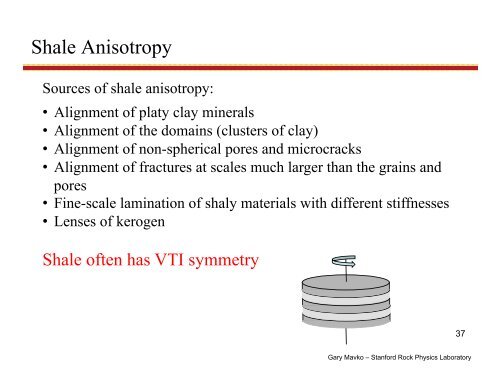Rock Physics of Shale - Stanford University
Rock Physics of Shale - Stanford University
Rock Physics of Shale - Stanford University
You also want an ePaper? Increase the reach of your titles
YUMPU automatically turns print PDFs into web optimized ePapers that Google loves.
<strong>Shale</strong> Anisotropy<br />
Sources <strong>of</strong> shale anisotropy:<br />
• Alignment <strong>of</strong> platy clay minerals<br />
• Alignment <strong>of</strong> the domains (clusters <strong>of</strong> clay)<br />
• Alignment <strong>of</strong> non-spherical pores and microcracks<br />
• Alignment <strong>of</strong> fractures at scales much larger than the grains and<br />
pores<br />
• Fine-scale lamination <strong>of</strong> shaly materials with different stiffnesses<br />
• Lenses <strong>of</strong> kerogen<br />
<strong>Shale</strong> <strong>of</strong>ten has VTI symmetry<br />
37<br />
Gary Mavko – <strong>Stanford</strong> <strong>Rock</strong> <strong>Physics</strong> Laboratory
















